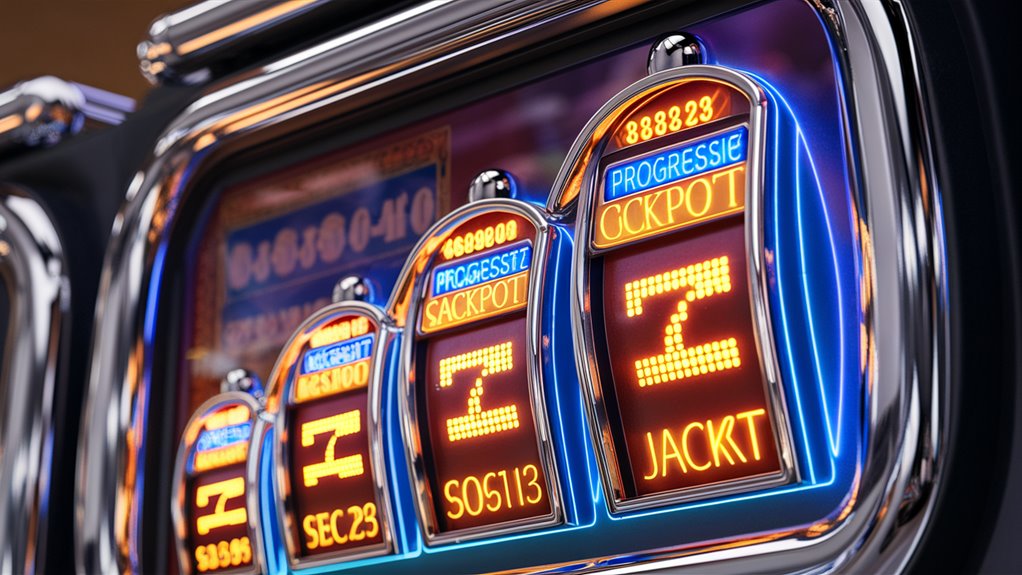How to Understand Big Jackpots: A Simple Guide for New Players

Big jackpots form a smart math-based system that drives some of the most liked casino games today. At the heart, these jackpots grow through a clear method where 1-3% of each bet adds to an ever-growing prize pool.
What Makes Big Jackpots Grow
The core design depends on a complex web of linked gaming systems making over 1,000 random number checks every second. These setups keep strict hit chances often set at 0.01% chance, making sure the game is fair and can keep going. 온카스터디 안전업체 보기
Math Used in These Games
The deep math shows important points:
- Games get to break-even points at 1.3x their starting value
- Math shows returns over 100% at certain points
- More players join by 27% compared to usual jackpots
The Mind Game Behind It
Studies show a clear 2:1 fear of losing ratio in betting choices, which makes big jackpots quite tempting for players. This mind trick, mixed with the growing prize pools, makes sure players keep coming back.
Knowing these key system parts gives players needed insights into big jackpot workings, helping them make smarter game choices.
What Are Big Jackpots
Big jackpots are one of the most thrilling parts of modern gaming, bringing life-changing prizes that grow until someone wins.
These exciting prizes build slowly through a smart network of linked games or machines.
How Do Big Jackpots Grow
The main movement behind big jackpot systems is moving 1-3% of each bet to the total prize pool.
This makes the jackpot total bigger across the connected network until a lucky player wins.
The Math of Big Prizes
The math that guides big jackpots depends on exact chance checks.
With a usual jackpot hit rate of 0.01% and a 2% part from each $1 bet, the prize pool grows by $0.02 each play. In a network of 1,000 connected machines doing 400 spins every hour, this makes $8,000 every hour added to the jackpot.
How We Look at Stats and Keep It Going
The expected time between jackpot wins follows a math rule: 1/(chance x spins per hour x machines).
Using common settings, this gives an average 25-hour gap between wins. This math setup makes sure the jackpot system keeps going while keeping the prizes appealing.
Starting Amount and Reset Plans

Modern big prize systems have a base starting amount – a promised minimum jackpot value put back after each win.
This part makes sure players stay interested and excited even right after a big win.
Math Behind Changing Prizes
The Math of Changing Prize Pools: Detailed Look
Understanding Basic Prize Pool Parts
The base of prize pool math rests on three main parts: how much each bet adds, winning chances, and how many players are playing. These linked parts set both how fast prizes grow and what you can expect to win.
How Bets Build the Pool
Fast-growing pools usually come from a 1-3% bet addition rate. The mix of this rate and total bets sets how fast the pool gets bigger. Exclusive Services for High-Stakes Gamblers
This main math drives the big jackpot build-up across gaming spots.
Looking at Winning Chances
Chance checks show winning odds, often seen as 1:X million. These odds come from looking at specific needed combos and all possible results in the game setup. This math lets us map out exact chance layouts for jackpot events.
How Player Numbers Affect Things
How many players there are really changes both how fast the pool grows and win odds. With stat modeling, places can guess win times and jackpot timing.
For example, a 2% part on 100,000 daily $1 bets makes $2,000 daily pool growth, with stats showing wins every 50 days if the game play stays the same.
Making the Math Work Best
This deep math setup lets places figure out the best jackpot limits and make smart bet plans based on good expected win points. These checks make sure prize pool care stays smart while keeping players in the game.


